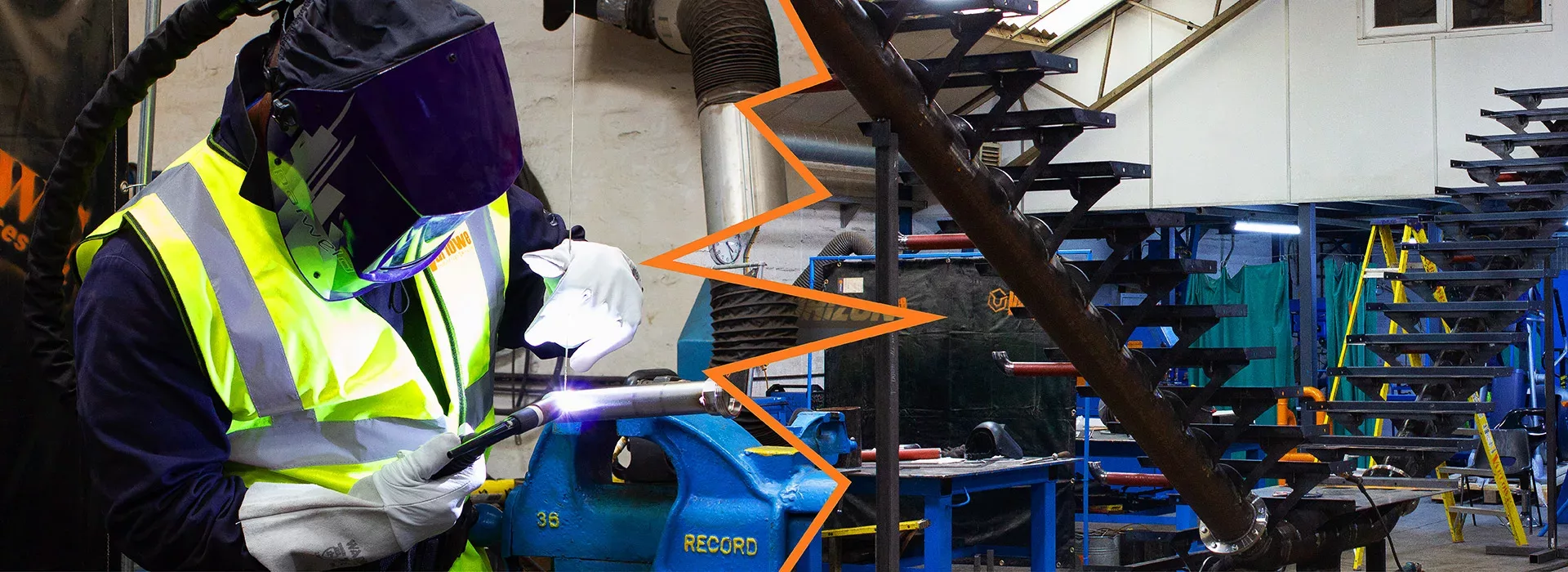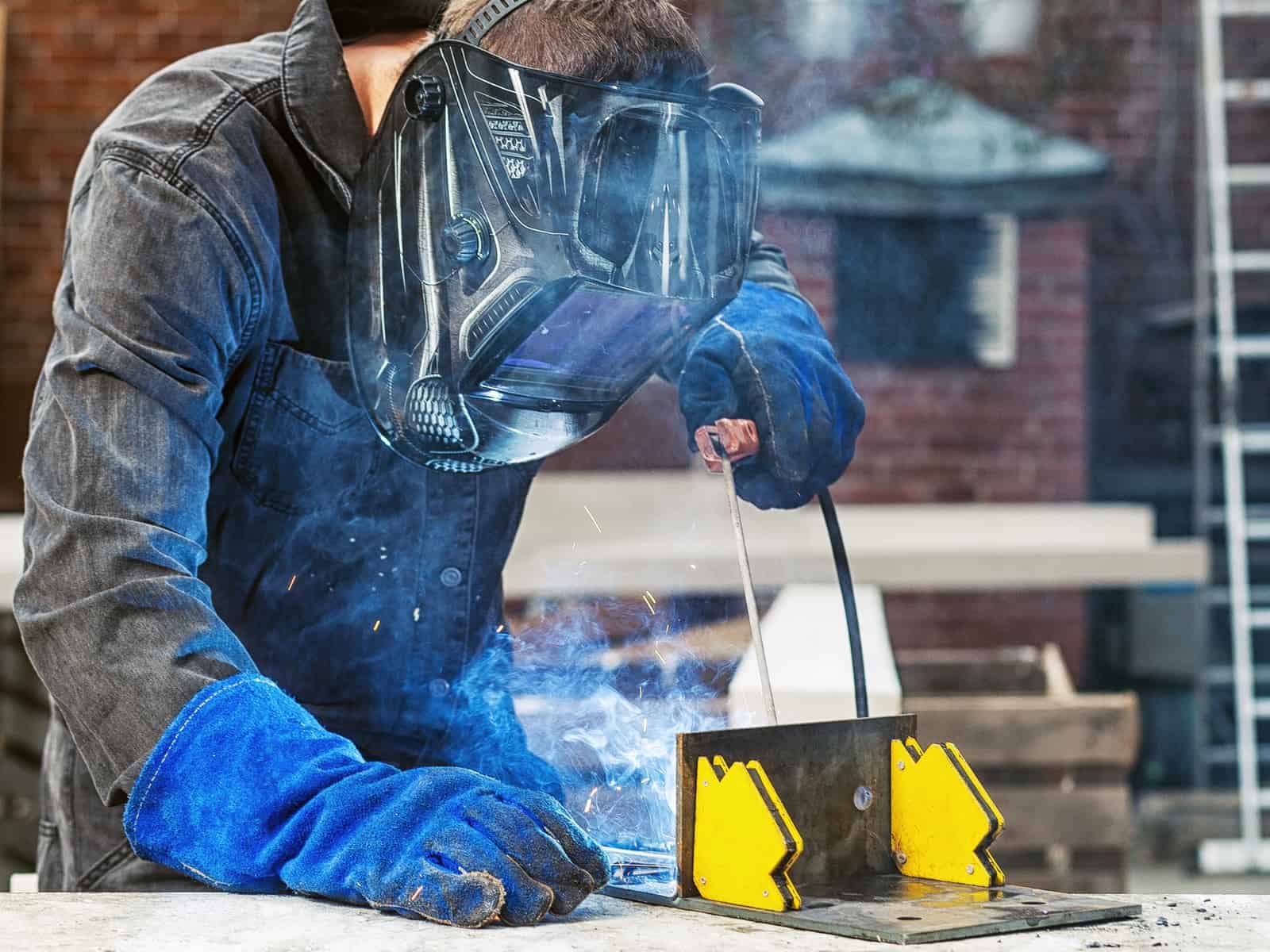All Concerning Welding: Trick Insights Into Techniques and Ideal Practices for Success
Welding incorporates a variety of methods, each matched for specific materials and applications. Understanding these methods, such as GMAW, SMAW, and TIG, is crucial for achieving optimal results. In addition, the ideal devices and safety and security methods can not be neglected. As preparation and repairing play vital functions in the welding process, understanding these aspects can greatly improve the top quality of the end product. What are the essential elements that ensure a successful weld?
Understanding Different Welding Strategies
Welding techniques encompass a selection of methods, each suited to particular applications and materials. Among one of the most usual methods are Gas Metal Arc Welding (GMAW), Shielded Steel Arc Welding (SMAW), and Tungsten Inert Gas Welding (TIG) GMAW, also referred to as MIG welding, is prominent for its rate and convenience, making it suitable for thin products. SMAW, or stick welding, is preferred for its simpleness and efficiency in exterior atmospheres, especially with thicker metals. TIG welding supplies precision and control, making it ideal for complex work and non-ferrous metals (Montana Mobile Welding and Repair Welding). Each strategy has its distinct benefits and considerations, permitting welders to select the very best technique based upon the task's demands, material type, and preferred results. Recognizing these strategies is crucial for effective welding
Important Welding Devices and Tools
While various welding strategies need specific abilities, the ideal devices and devices are just as essential for attaining top quality outcomes. Crucial welding devices includes welding equipments, which vary depending upon the method-- such as MIG, TIG, or stick welding. Protective equipment, including gloves, safety helmets, and aprons, guarantees security and convenience during the process. Additionally, clamps and components help protect materials in place, making sure precision in welds. Consumables like welding rods, wire, and protecting gas are also vital elements that influence the high quality of the weld. Moreover, devices such as cutters and grinders promote surface area preparation and post-weld finishing, adding to an expert result. Buying top quality tools inevitably improves the efficiency and efficiency of welding projects.
Safety And Security Practices in Welding
Proper security methods are vital in the welding sector to secure employees from potential hazards. Welders must use ideal personal protective devices (PPE), consisting of helmets with correct shading, handwear covers, and flame-resistant clothes. Ample ventilation is essential to minimize exposure to unsafe fumes and gases generated throughout the welding process. Additionally, workers need to be educated in the appropriate handling of welding equipment to stop crashes. Fire precaution, such as maintaining flammable materials away from the welding area and having fire extinguishers readily offered, are necessary. Regular assessments of devices and work spaces can aid identify potential risks prior to they bring about crashes. By sticking to these security practices, welders can develop a safer working setting and reduce risks related to their profession.
Preparing Materials for Welding
Preparing products for welding is a vital step that substantially influences the quality and stability of the end product (Welding). Proper prep work involves cleaning up the surfaces to get rid of impurities such as dust, oil, and rust, which can jeopardize the weld. Techniques such as grinding, fining sand, or making use of solvents are typically used to attain a tidy surface. Furthermore, guaranteeing that the products mesh snugly is vital; voids can lead to weak welds. It's likewise essential to take into account the placement and positioning of the components, as this will certainly affect the simplicity of welding and the last outcome. Choosing the suitable filler material and ensuring compatibility with the base metals is necessary for achieving solid, long lasting welds.
Tips for Getting High-Quality Welds
Attaining top notch welds requires interest to detail and adherence to ideal techniques throughout the welding procedure. Proper joint preparation is essential, making sure surfaces are tidy and totally free from impurities. Picking the appropriate filler material and welding method based upon the base steels is crucial for perfect bonding. Keeping regular travel speed and angle while welding can advertise and stop issues harmony. Additionally, managing warmth input is necessary; excessive warmth can result in bending and deteriorated joints. Regularly inspecting the welds during the procedure permits prompt changes if needed. Lastly, employing appropriate post-weld treatments, such as cleaning and stress relief, can improve the resilience and integrity of the weld, ultimately guaranteeing a successful outcome.
Fixing Typical Welding Issues
Welding frequently presents difficulties that can influence the top quality and honesty of the final item. Typical issues such as porosity, inconsistent weld grains, and getting too hot can arise, each needing particular troubleshooting methods. Comprehending these problems is vital for welders to improve their skills and attain optimal results.
Porosity Issues Explained
Although porosity can frequently be overlooked, it continues to be an essential problem in welding that can compromise the stability of a completed product. Porosity refers to the existence of little gas pockets within the weld grain, which can damage the joint and lead to early failure. This issue normally develops from pollutants, moisture, or incorrect securing gas protection during the welding process. To alleviate porosity, welders should validate that the base products are completely dry and clean, use proper shielding gases, and keep consistent welding parameters. Regularly evaluating the tools and environment can additionally aid recognize prospective concerns prior to they manifest in the weld. Addressing porosity properly is necessary for attaining solid, resilient welds that satisfy high quality requirements.

Inconsistent Weld Beads
Inconsistent weld beads can greatly affect the high quality and strength of a finished item. Different fiber welding variables add to this issue, including incorrect travel speed, wrong amperage settings, and irregular electrode angles. When the welder relocates also swiftly, a bead may show up slim and do not have infiltration, while relocating as well slowly can cause excessive buildup. Furthermore, using the incorrect amperage can result in either undercutting or excessive spatter, both of which compromise weld stability. The welder's technique, such as irregular torch movement, can likewise cause uneven grain look. To minimize these issues, welders ought to focus on preserving stable, controlled motions and making certain correct devices settings to achieve uniformity in their welds. Consistency is key to attaining strong and trusted welds.
Getting Too Hot and Warping Issues
Too much warm throughout the welding process can cause considerable getting too hot and buckling problems, affecting the architectural honesty of the workpiece. These issues often manifest as distortion, which can endanger positioning and fit-up, making further setting up testing. Factors adding to overheating consist of the selection of welding specifications, such as voltage and travel rate, along with the type of material being bonded. To alleviate these concerns, welders need to preserve constant traveling rate and suitable warmth input while keeping an eye on the work surface temperature level. In addition, preheating or post-weld heat therapy can help relieve anxieties triggered by rapid air conditioning - Montana Mobile Welding and Repair Fabrication. Normal assessment and adherence to best techniques are necessary in stopping getting too hot Your Domain Name and making certain the long life and reliability of welded frameworks
Regularly Asked Concerns
What Are the Profession Opportunities in the Welding Market?
The welding market offers varied occupation possibilities, consisting of positions as welders, inspectors, engineers, and instructors. Professionals can work in production, building and construction, aerospace, and automobile fields, taking advantage of solid demand and affordable salaries in various duties.
Exactly How Can I Boost My Welding Speed Without Compromising Quality?
To boost welding rate without giving up top quality, one ought to exercise reliable strategies, preserve equipment, optimize setups, and improve hand-eye control. Routine training and seeking responses can additionally substantially contribute to attaining much faster, high-quality welds.
What Accreditations Are Offered for Welders?
Countless qualifications exist for welders, consisting of those from the American Welding Society (AWS), the site National Center for Building And Construction Education And Learning and Research Study (NCCER), and different industry-specific companies. These qualifications enhance employability and show skill efficiency.
Exactly How Does Welding Affect the Features of Metals?
Welding affects the properties of steels by altering their microstructure, which can lead to modifications in ductility, hardness, and strength. Warmth input and air conditioning prices during the process significantly impact these material attributes.
Can I Weld Dissimilar Metals Together?
